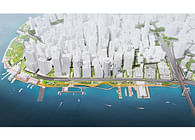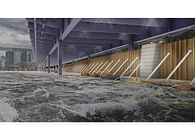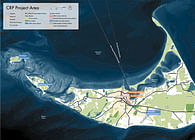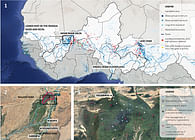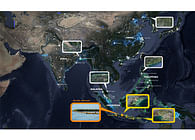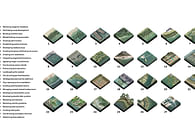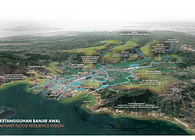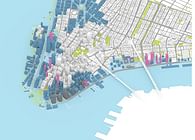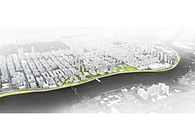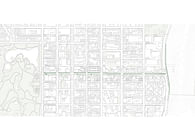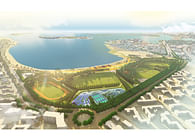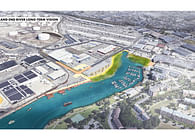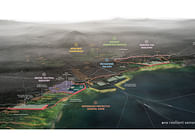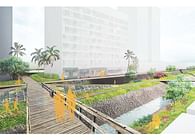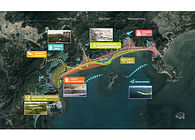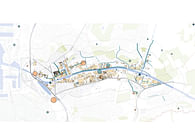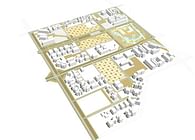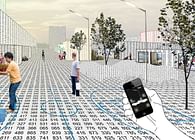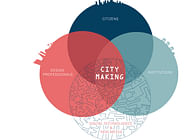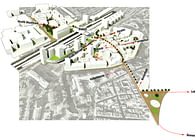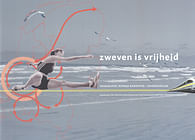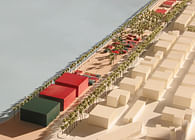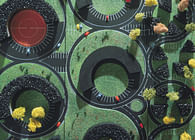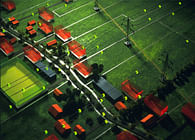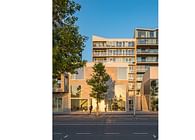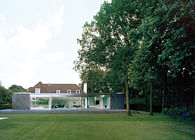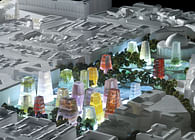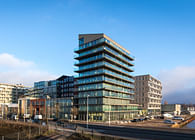
Amsterdam, NL and New York
VROM (The ministry of spatial planning) has commissioned One Architecture, in combination with Zwarts & Jansma Architecten, to design the Olympic Main Infrastructure for the Netherlands for the Games in 2028. The OHS approaches the spatial assignment related to ambitions in the field of sports, economy, sustainability, welfare and society.
The core of the advice is that the Netherlands are basically too small to organize the Olympics. It is spatially small. It is organizationally fragmented. It is mentally small. How to plan big in a small country?
There are two ways to handle this. The first is to force the compelling scale of the Olympics, and the second is developing flexibility and cleverness based on this smallness. The tension between these two dimensions was detected continuously while working on the OHS. The question is whether the focus should be on the Olympic Games or on the Olympic Plan. Between a focus on the candidate cities Amsterdam and Rotterdam or on their environs. Between planning policy starting with the OHS or with the OHS following spatial policy. Between the IOC guidelines and pro-actively working to change these, in a form of ‘agency’. Between concentration and distribution of functions (it might be argued, following Frieling, that this tension is the basic tension in Dutch planning of the last 6 decades).
The Olympic Plan, so the analysis goes, is a good way to deal with this tension, but fails from a planning perspective. The time-dimension of planning is much larger than the time-dimension of building support. In planning, we don’t have time to lose. The result of One Architecture’s work is the invention of a mechanism to deal with this tension in the field of spatial development. A method of planning is being proposed in which, starting from a wide scope plans are increasingly focused: rather a road map than a design. This results in a way of planning in which public discussions, innovations, change and unforeseen developments can find their place, not by changing the plan but by defining moments of choice and decisions in order to focus the plan more and more. Those moments also create the politically very important ‘exit’.
Status: Unbuilt
